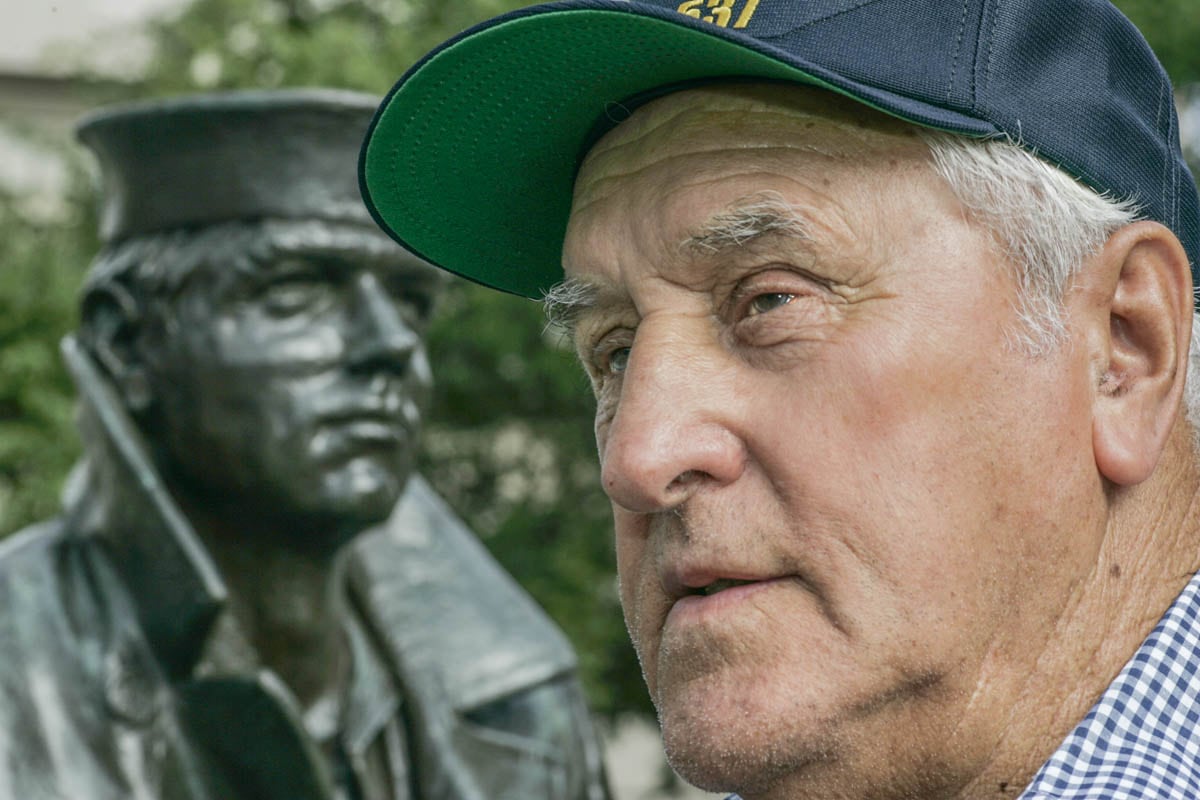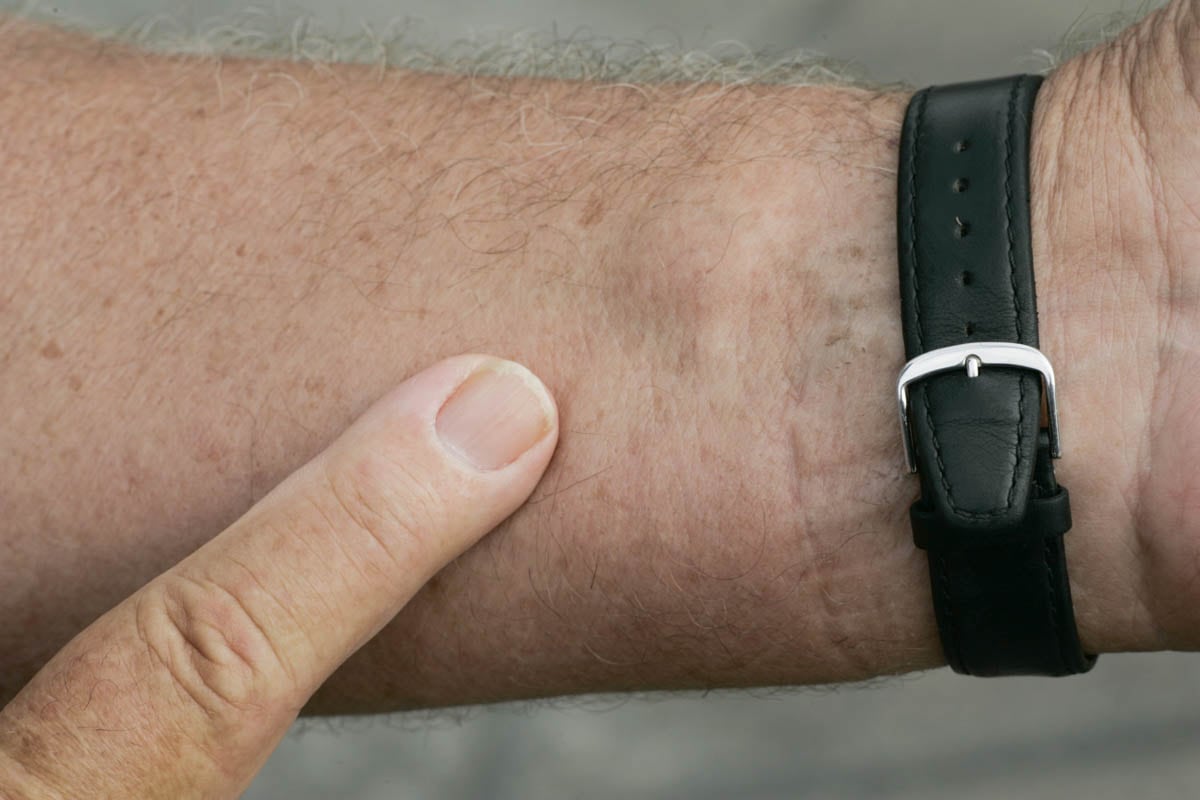This story was originally published on Oct. 24, 2005 in Navy Times.
It’s a visual icon of World War II, a kiss that symbolized the relief of a nation and possibly the world.
Only moments before, word had spread throughout New York City and the nation that Japan had surrendered. It was 1945, and the war was finally over.
In New York that Aug. 14, the town exploded, the bars packed with overjoyed service members and civilians.
Times Square was one big party, and amid the din, a sailor and a nurse somehow ended up kissing.
Life magazine photographer Alfred Eisenstaedt captured the event on film, making that chance happening a part of history.
“They threw anything and kissed anybody in Times Square,” wrote Lt. Cmdr. Victor Jorgensen, a Navy photographer who also documented the event, in his caption.
But neither shooter recorded the names of the participants. And in the joy that followed, no one seemed to care.
That’s why, officially, Life magazine has never endorsed anyone’s “kiss” claims, though they gathered a few of the claimants on the 40th anniversary of V-J Day to re-enact the moment.
But now, with the help of computers, the Navy and the nation can finally call the “kissing sailor” by his name: George Mendonsa.
“Over the years, many have claimed to be me in that picture,” said Mendonsa, a native of Newport, R.I. But only Mendonsa’s claim has now been backed up by science.

First, in 1994, Richard Benson, a nationally recognized photography expert and Yale University professor, analyzed each of Eisenstaedt’s four images from that day. He concluded it had to be Mendonsa and Greta Freeman of Frederick, Md. - none of the other claimants fit.
Benson noticed a lump on the left arm of the sailor in the photo, near the wrist; Mendonsa has a similar mark, 1994 photos show. Benson also located Mendonsa’s future wife, Rita, in the background of one of the frames.
Then, in 2004, a team of research scientists from the Mitsubishi Electric Research Lab in Cambridge, Mass., reconstructed Mendonsa digitally, using technology often used by law enforcement agencies to catch crooks.

Their findings, too, found Mendonsa and Freeman to be nearly an exact match.
“If this evidence was presented in a trial, it would have led to a conviction,” said Jerry O’Donnell, a retired Navy captain and Mendonsa’s neighbor, who used the evidence to convince Newport’s Navy Museum that Mendonsa is “the guy.”
Early combat
The son of a Newport fisherman, Mendonsa joined the Navy in 1942, even though his status as a fisherman left him ineligible for the draft.
“The Navy was critically low in the technical seagoing ratings of torpedoman, gunner’s mate and quartermaster,” Mendonsa said. “They especially needed people with navigational skills, and since I had some experience in that area, they made me an offer.”
So, after boot camp in Newport, he completed the quartermaster course and headed to the fleet as a petty officer third class.
Mendonsa was sent west to Treasure Island Naval Base in San Francisco.
“They were putting crews together for ships that were being built out there,” he said. “I got picked to be on The Sullivans, a destroyer being named for the brothers who all went down on the [light cruiser] Juneau off Guadalcanal.”
He reported onboard in July 1943, and by Dec. 23, the ship was off to war and its first action - the raid on the Japanese naval base at Truk.
“Our airplanes caught them, just like they did with us at Pearl Harbor,” Mendonsa said.
By now, island-hopping was in full swing, and Mendonsa and The Sullivans were in action from Leyte Gulf to Saipan and the Philippines. On May 11, The Sullivans was escorting the aircraft carrier Bunker Hill as it launched airstrikes against Japanese positions on Okinawa.
“The Bunker Hill had her airplanes on the deck being refueled and armed with bombs and rockets when a kamikaze hit the flight deck,” Mendonsa recalled.
What he saw over the next few hours would stay with him for the rest of his life, and just may have led to the famous kiss.
A lasting impression
“Because they were refueling, the explosion ignited the whole flight deck,” Mendonsa said. “There was a wall of fire coming down the port side of the Bunker Hill, and bombs and rockets were exploding on the flaming flight deck. There were many sailors trapped on the other side of that wall.”
The Sullivans maneuvered alongside the Bunker Hill to pick up sailors who were jumping into the burning water.
Mendonsa and his shipmates would help pick up 166 sailors that day, many burned and wounded, later transferring many of the injured to the hospital ship Bountiful.
“I saw all those nurses onboard the Bountiful who assisted us getting the wounded onboard - their abilities and caring left a great lasting impression of nurses in my mind,” he said.
Just a month later, after a year- and-a-half of almost continuous steaming and combat, The Sullivans was sent back to San Francisco for rest and repairs.
As the ship headed into overhaul, Mendonsa flew home for 39 days of leave in Newport.
“While I was home on leave, my sister’s in-laws came to visit and brought along their niece, Rita,” Mendonsa said of the first time he met his wife of 58 years.
His leave was about to expire and he was scheduled to fly out of New York in the early-morning hours of Aug. 15 and was spending his final days of leave visiting Rita in New York.
“We were in Radio City Music Hall watching a show, then someone began to pound on the doors,” he said. “When the doors opened, people began shouting - the Japs had surrendered and the war was over.”
Mendonsa said he and Rita immediately headed for a local bar.
“It was wall-to-wall people celebrating, and you didn’t get to choose, you just drank what was put in front of you,” Mendonsa said.
After a few drinks, Mendonsa and Rita headed across Times Square to the subway station to head back to her Long Island home - and that’s when he saw the nurse.
“Everyone was celebrating and I’d had a few drinks in me,” Mendonsa recalled. “It was a real brief moment, honestly, and all my memories of the wounded being cared for by those nurses came back.”
While Rita watched a few feet away, Mendonsa put his arms around the nurse, bent her back and kissed her, then went on his way.
‘It’s you’
He didn’t think anything of the kiss again for another 40 years.
“It was in the ’80s when Life magazine published the picture again, looking for the sailor and nurse to come forward,” he said. “A friend of mine called me up and asked where I had been on V-J Day, and I told him New York.
“I know,” Mendonsa recalls the friend saying, “I am looking at a photo of you kissing a nurse there - it’s you.”
Though he wasn’t the only one to respond, he went to Times Square for the 40th anniversary of V-J Day. He met Greta Freeman, and they embraced and kissed for the second time.
Neither he nor Freeman, who also married after the war, wants to profit from a small visual place in history that they share.
“I’m often asked why I don’t just quit, just give it all up,” he said. “I will never give them the satisfaction because I want the credit. I think the tests prove it and I’ve earned it.”
Through it all, Mendonsa remains a sailor. He’s continued to go to sea, fishing the New England waters just as he did with his father before he joined the Navy.
“It’s in my blood, I can’t help it,” he said.
Mark D. Faram is a former reporter for Navy Times. He was a senior writer covering personnel, cultural and historical issues. A nine-year active duty Navy veteran, Faram served from 1978 to 1987 as a Navy Diver and photographer.





